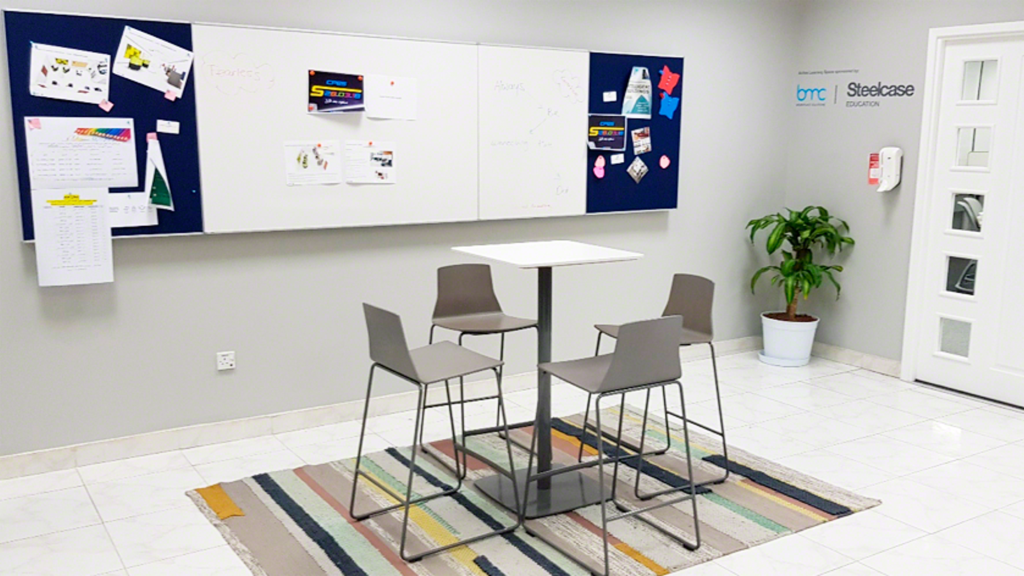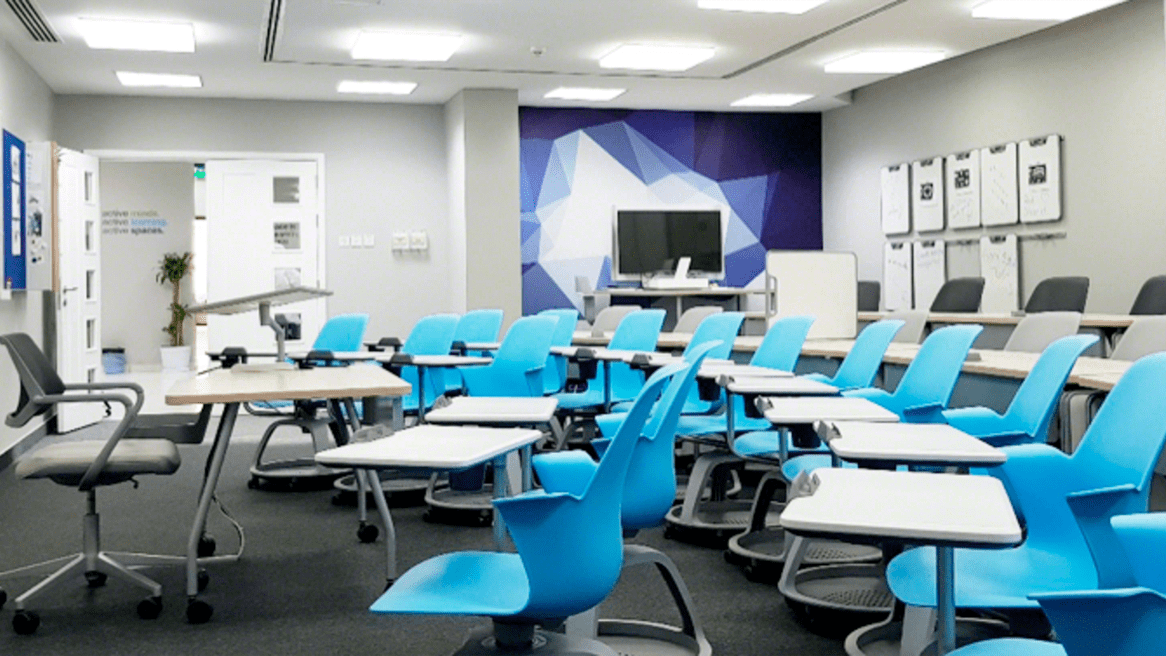Helping Kuwait University Students Learn in a Better Way
How a classroom is designed and furnished can significantly improve how educators teach and how students learn.
That was the key finding of a pilot study conducted at Kuwait University (KU) in preparation for its move to a new 490 ha (1,211-acre) campus in Al Shadadiya that will consolidate six previously dispersed locations of this public university established in 1966. The first group of 22,000 students arrived at the new campus in September 2019. Once completed, it will host 40,000 learners and be one of the largest educational campuses in the world.
The Steelcase KU pilot study involved replacing traditional furnishings in a College of Engineering & Petroleum classroom at the Khaldiya campus with innovative Steelcase products purposefully designed for active learning. Also, based on the insight that learning can happen anywhere, an adjacent space was created to support informal discussion and focused study between classes. The intent of creating these spaces was to preview the learning environments that would be prevalent at the new campus and involve students and faculty in this important change.
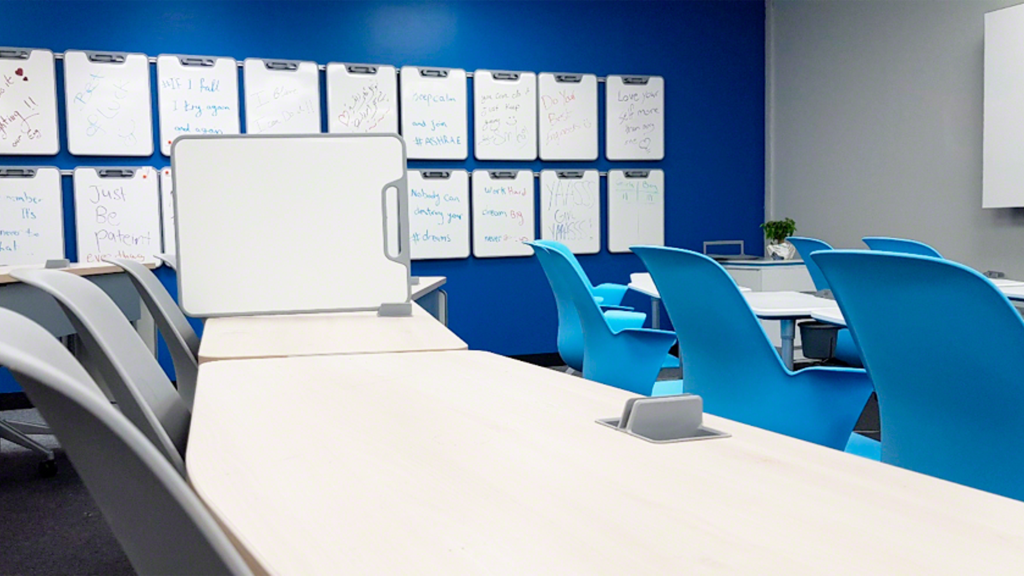
“We wanted to introduce this new classroom concept and this new level of furniture to the public, professors and students to show how it would affect education in advance of the new campus we were building,” explains Dr. Anwar Al-ibrahim, assistant director of the KU construction program. In addition, it was another opportunity for Steelcase to research and measure the impact of furniture and classroom design on learning.
Instead of a traditional setting with rows of fixed tablet chairs facing a teacher’s lectern at the front of the room, all furnishings in the new pilot classroom are on casters to support easy transitions to group projects. Tablet chairs swivel to provide multiple vantage points and keep attention energized. Classroom tables include integrated whiteboards for student use, and multiple wall-mounted whiteboards and screens make it easy for professors to project information. Nearby, a new informal space includes tables and chairs for small groups as well as semi-enclosed microenvironments for individual study.
Proving the Impact
Before installing the pilot space, Steelcase surveyed five professors to assess the degree to which they believed KU’s existing, traditional classrooms supported effective teaching and learning. Then, after they had taught in the new classroom, these same professors, as well as their students, were surveyed to measure the impact of the new Steelcase learning environment.
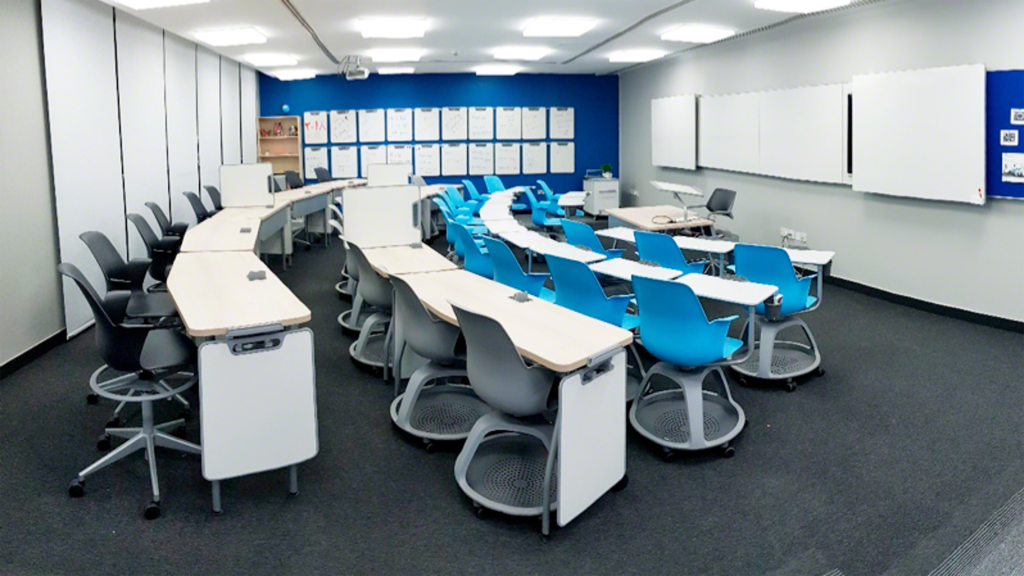
The results proved that the pilot classroom enhanced learning in measurable ways. In particular, comparison data showed that the pilot classroom generated a 95% improvement in professors’ assessment of their students’ ability to access a variety of learning tools and a 53% improvement in how easy it was for them to move around the classroom and mentor their students. Other significant findings showed improvement in how well the space supported professors’ desired teaching and learning methods and enabled their students to work more collaboratively.
Similarly, students gave the pilot classroom high marks. They reported it enabled them to see their professors moving around the room. They also indicated being able to move around made it easy to collaborate and get help from their peers, as well as focus and work independently as needed. Perhaps most meaningful of all in terms of impact, the results documented students’ belief that the pilot classroom gave them high motivation to learn.
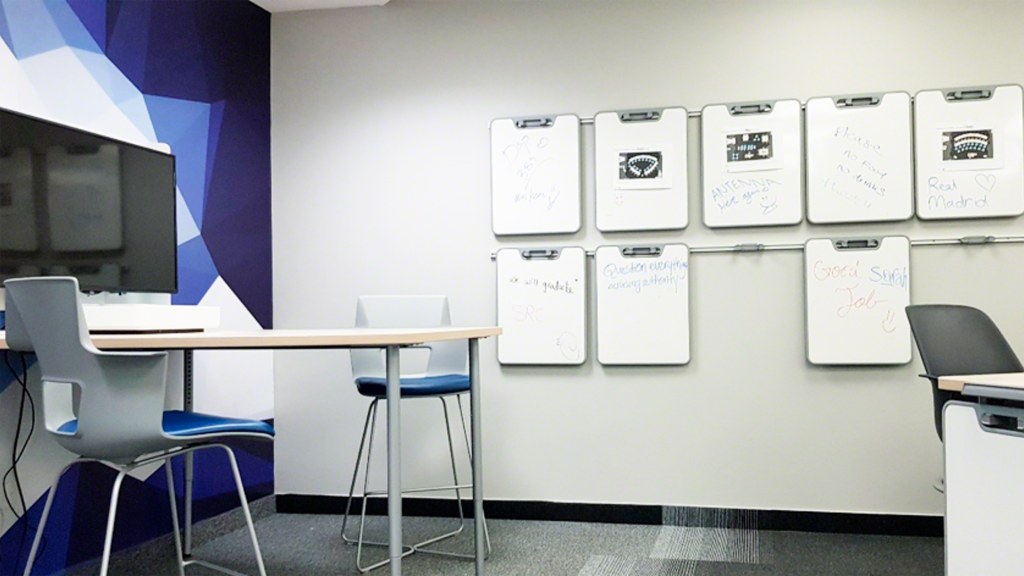
Functional & Inspiring
“From the day it was inaugurated, every semester people were clamoring to use this new classroom,” says Dr. Al-ibrahim, who observed it in use and also talked with users about their impressions. “The flexibility compared to other classrooms and the bright colorfulness of the furniture attracted professors and students. Instead of the boring old furniture, it lifted students’ enthusiasm for learning.” The adjacent outside-the-classroom space proved equally popular, she reports. Passing through every day on the way to her office, she says she’s never found it empty.
Learning environments like these at KU’s new campus tangibly reinforce government leaders’ goal of advancing public education in Kuwait and making it more interactive.
“Working in collaboration is always an advantage, and it’s a skill of give and take,” says Dr. Al-ibrahim. “You give because you are part of a team, so you have to chip in and do your part. You take because you listen to others talking about the same thing but from a different perspective. In our old classrooms, we didn’t have the ability or the time to easily go into groups because the setup was hard and disruptive to create. Now it’s much easier.”
Although successful education depends on more than the physical space and furnishings, they have an important role. KU recognizes this and has put high standards in place for its new campus, looking to Steelcase as a partner to help them achieve their goals. “Steelcase is a company that not only creates educational furniture,” concludes Dr. Al-ibrahim, “but they also do research on where education is heading and design furniture that helps students embrace education in a better way.”
